Are You Seeing Enough Senior Pets?
Tips on Marketing to Owners of Senior Pets
by Mary Gardner, DVM
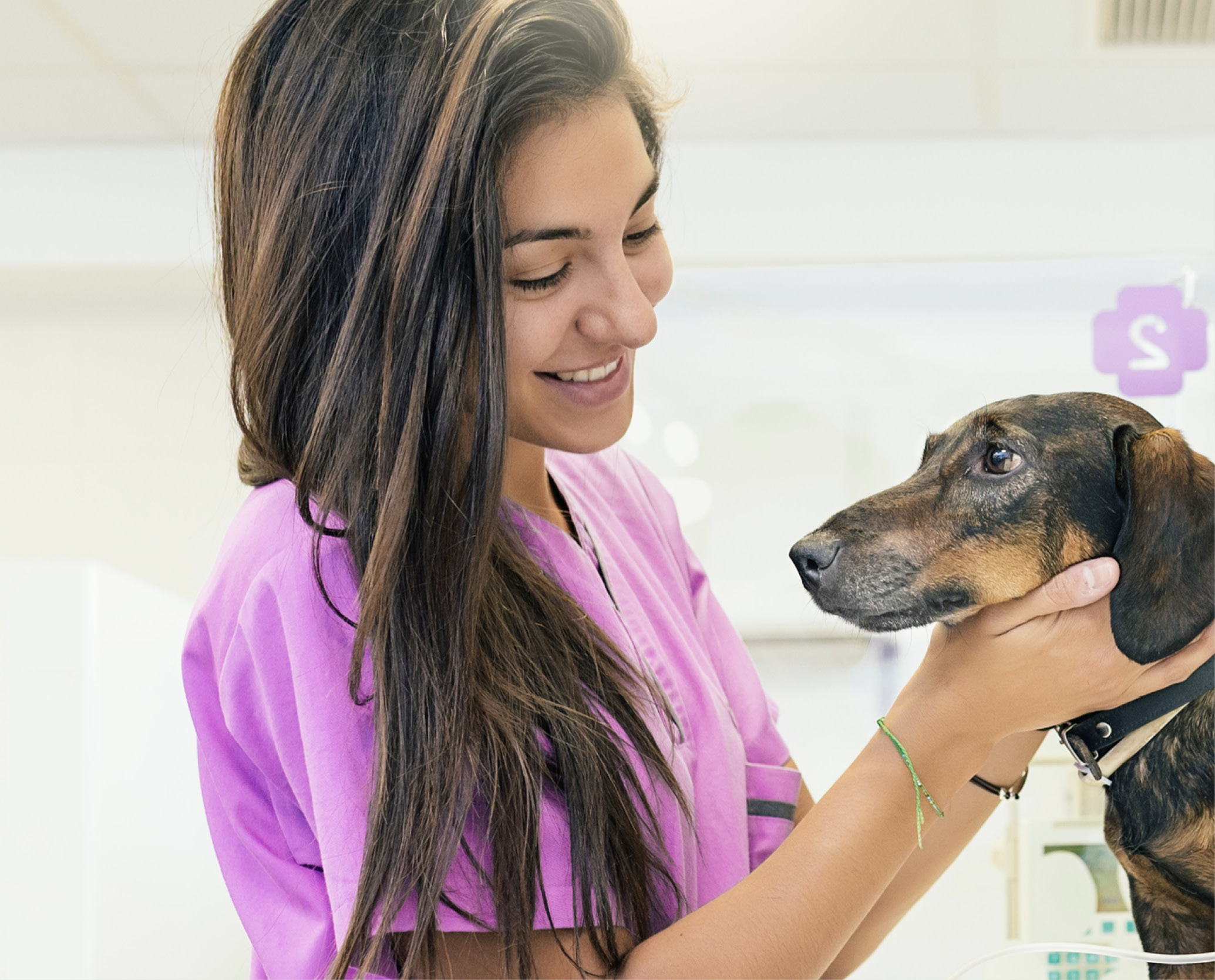
Read the Guidelines!Mary Gardner, DVM, was on the task force that developed the 2023 AAHA Senior Care Guidelines for Dogs and Cats. Read the full guidelines for lots of useful information at aaha.org/senior-care. |
As a species, our maximum lifespan probably hasn’t changed much over millennia. Yet scientific progress, especially in the last 150 years, has boosted our life expectancy and thus the chance we’ll reach peak lifespan—all while living healthier throughout our years.
Over the last several decades, pets, too, have gained life expectancy rewards related to better medicine, nutrition, and health education that mirror those in human medicine. Plus, stronger family-pet bonds have bolstered owners’ enthusiasm for enhancing their pets’ lifelong quality of life. So veterinarians should be seeing many more patients in their advanced-age life stage than ever before.
Get an Objective Perspective on Your Senior Canine and Feline Patient Numbers
Look for gray muzzles and tottering tabbies! Flag senior pets in your practice management software and run a new report every six months. Here’s why: I did a study with VetSuccess, and data from thousands of US veterinary clinics comprising over 14 million dogs and cats showed:
- 12% of dog and cat patients are puppies and kittens,
- 42% are ages 1 year through 6 years,
- 18% are ages 7 through 9 years,
- 26% are ages 10 years and older, and
- 2% are birth date unknown.
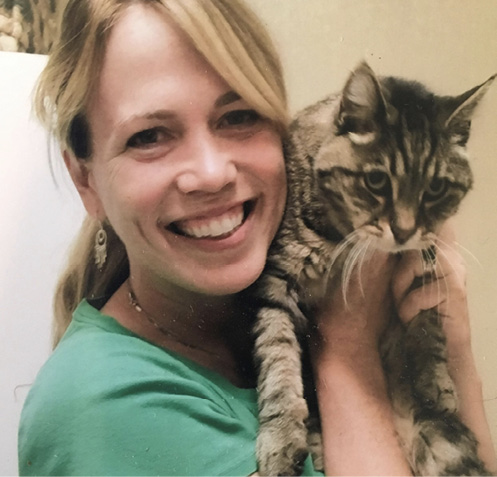 Mary Gardner, DVM, and Bodhi during an annual exam
Mary Gardner, DVM, and Bodhi during an annual exam
You don’t want to lose touch with the 44% of your patients who are seniors.
The study also evaluated data from over 800,000 pets who were euthanized, and uncovered sad statistics:
- 55% of cats and 40% of dogs did not see their veterinarian in the 18 months before they were euthanized.
This data indicates that too many clients who have advanced-age pets don’t visit their veterinarian for guidance on their ailing pets’ issues during the last several months of their pets’ lives.
That’s too much missed opportunity for vets to better help elderly pets. We can do so much to manage these pets’ ailments and support a good quality of life (for pet owners, too!) during a pet’s late-life stage, but pet owners need to be aware of the help we can provide.
How Can We Better Help Senior Pets?
Understandably, veterinary practices tend to focus their educational and promotional efforts on puppy, kitten, and middle-life adult pet wellness but often fall short when communicating with and marketing to owners of senior pets. I’ve looked at hundreds of veterinary practice websites, and the vast majority feature images of young pets and focus on puppy, kitten, and adult dog and cat issues and diseases. Their senior pet content typically amounts to a suggestion that pet owners visit with their senior pet more often and get more diagnostics done to uncover hidden problems. In many ways, it’s a scare tactic. Some even list “senior pet and end-of-life care” as a combined category, which may inadvertently send a message to pet owners that you can’t do much for their senior pets, (so please separate these subjects!) Rarely do I see resources offered for the ailments that older pets face or support related to caregiver challenges. Too little information translates into lost opportunities for connection.
 Who could resist this face?
Who could resist this face?
Similarly, next time you go to a veterinary conference, look at the various companies’ marketing images. Most also tend to focus on younger pets. Senior pets are seldom the poster children, yet I think images of sweet, gray-face, bony-head dogs and dear, scrappy, skinny old cats would capture many hearts.
As pets reach advanced ages, pet owners are often faced with a lot of new physical challenges and emotional concerns that affect their pets and themselves. Clinical signs and diseases often change quickly in senior pets, so they need more frequent veterinary care, and their families can learn much during these visits to improve the later stages of their pet’s life. Here are five tips to connect with them:
1) Create a robust senior pet healthcare plan.
Encourage owners to consistently seek veterinary guidance for their senior pets by:
- Bundling services—for example, offer four office visits/year discounted from the individual office visit fee to incentivize quarterly exams or rechecks.
- Not bundling services that pets may not need at this life stage (e.g., tailor vaccinations to the pet’s lifestyle and environment, geographic area, and local laws).
- Allowing 30 minutes for your consultations.
- Providing a health observations questionnaire tailored to elderly pets for owners to complete and bring to their appointments. I’ve designed two you can use: bit.ly/seniordogquestionaire and bit.ly/seniorcatquestionaire.
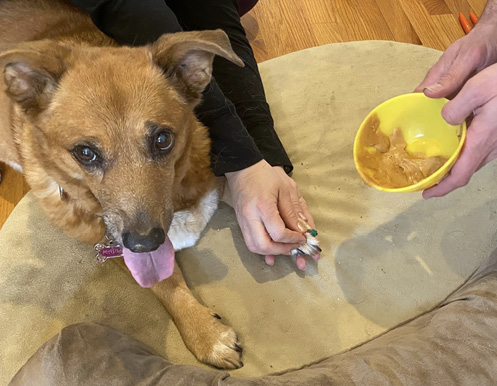 Maple gets Toe Grips placed with Fear Free techniques.
Maple gets Toe Grips placed with Fear Free techniques.
- Encouraging owners of aging pets to take a photo and short videos of their pets (e.g., showing their pet resting, playing, walking, using stairs, getting up and down from their favorite perch or nap spot, and getting into the litter box or out to the yard) every three months and keep them dated and organized for easy comparisons and to share them with you during veterinary visits. These help you suggest changes in the home for optimal senior pet living and safety and provide supporting information as you help owners assess their pet’s quality of life.
- Suggesting that pet owners journal about their pets’ health, so they can readily review their pet’s progress or setbacks and easily identify concerns with you during visits. I’ve created two journals designed especially for owners of geriatric cats and dogs: bit.ly/seniorcatjournal and bit.ly/seniordogjournal.
- Creating a retail space for senior pet products, or providing product lists and ordering options for clients to consider. For example, I created an Amazon page specifically for senior pet care product suggestions: amazon.com/shop/drmarygardner.
- Offering special services such as senior pet housesitting, monthly “sanitary shaves,” Fear-Free nail trims, laser therapy, physical therapy, and senior boarding/day care.
| When clients complete pet health history forms in advance, you’ll gain 40% efficiency (shorter appointment time), 80% higher client satisfaction (better appointment experience), and a 23% bump in revenue related to those appointments. |
2) Teach more senior-centered topics.
Share plenty of senior pet healthcare information and the idea of visiting your practice will more readily pop into the minds of families with senior pets. Provide the content—or point pet owners to reliable resources elsewhere—and bring these subjects and tools into the limelight:
- The aging process (simply stating that pets age at a rate of 7 years to our 1 year is insufficient and inaccurate) and signs of aging.
- The top 10 ailments or signs that senior cats and dogs struggle with:
- Mobility
- Cognitive dysfunction
- Sleep disturbances
- Low energy
- Pain
- Heart disease
- Kidney disease
- Dental disease
- Diminished vision
- Cancer
- Quality-of-life assessments. Many are available, and I created these:
- for dog owners (bit.ly/dogLQ), and
- for cat owners (bit.ly/catLQ).
- Special services your clinic offers (e.g., laser therapy, acupuncture, physical rehabilitation, geriatric boarding).
- Antibody titers for certain diseases.
- Support for caregiver fatigue.
- Saying the final goodbye.
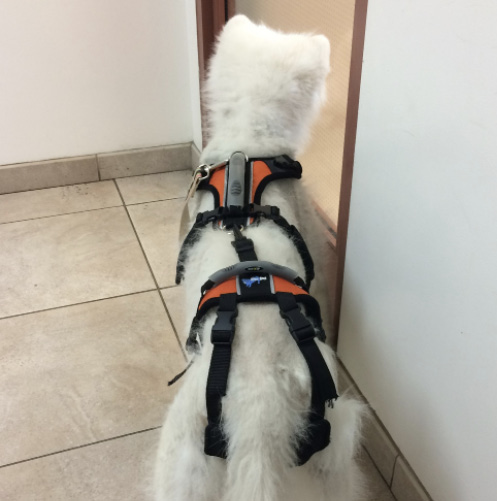 14-year-old Serissa waiting for her bloodwork results and showing off her harness
14-year-old Serissa waiting for her bloodwork results and showing off her harness
3) Raise awareness and extend your reach.
Many owners are in the dark about veterinary care options at the ready for their pets. Tip off pet owners about the behaviors and physical clues to watch for in their senior pets, and let them know you understand the challenges that they as caregivers may face. You’ll gain their confidence, and they’ll be more likely to reach out to your practice for aged-pet assistance. Marketing is a must to stay in touch with clients and to reach pet owners who aren’t already visiting your practice! Use these tools:
- Clinic website. About 30% of this content should call out senior-specific subjects and quality-of-life assessments.
- Photos and video clips of senior pets. Add these to all of your marketing efforts. In my mind, nothing outshines a skinny old cat or wobbly dog as a clinic model!
- Newsletters. Add golden-year dog and cat topics!
- Blogs and vlogs. Devote at least one-third of these messages to senior pet issues.
- Paid ads. Direct a few of your puppy and kitten advertising dollars to ads that illuminate veterinary care for furry elder family members.
- Social media. Make a third of your clinic’s posts relevant to senior pet care and caregiver concerns.
4) Enhance your clinic.
Everyone who visits and works at your practice should readily recognize that you also cater to senior pets. I suggest that veterinary clinics:
- Designate a "Gray Muzzle" parking spot.
- Send daily texts and photos to clients who board their senior pets, and personalize the appropriate areas (lobby, boarding suite) with surer footing (yoga mat or bathmats), a low-entry litter box, orthopedic bedding, and a proper perch or hide box.
- Create clinic policies and medical protocols specific to senior pets that address:
- patient holding techniques, anesthesia procedures and monitoring, in-patient care, surgical positioning, venipuncture, and more.
- Train the entire veterinary team to understand the special considerations advanced-age patients may need with respect to food palatability, thermoregulation, noise, mobility, vision, discomfort, anxiety, elimination frequency, and medication administration. Teach them how they can carry through on your standards of care for these pets within their realm of responsibilities.
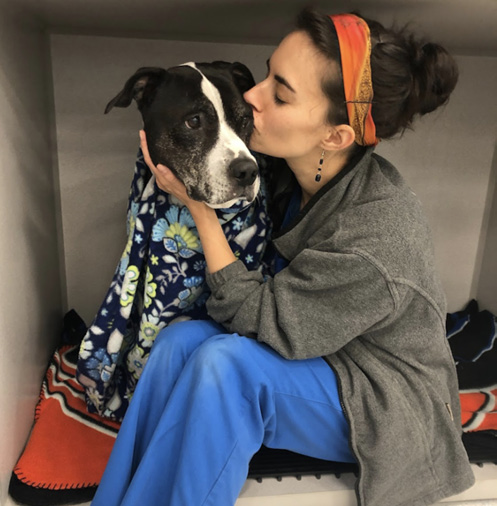 A lucky senior patient at Kingsbrook Animal Hospital getting special care.
A lucky senior patient at Kingsbrook Animal Hospital getting special care.
5) Care about the caregiver.
For some, it’s hard to fathom the difficulties pet owners have when they’re caring for an ailing senior pet. The results of a survey I conducted with owners of senior pets showed that, on average, they spent 3.5 hours a day caring for their pets.
Furthermore, a 2017 study of pet owner caregivers used mental health measures that have been studied in human caregiving relationships. The results showed that compared with caregivers of healthy pets, caregivers of terminally or chronically ill pets had more stress, more symptoms of depression and anxiety, reduced psychosocial function, and poorer quality of life. Another study in 2020 evaluated owners whose pets had cancer or suspected cancer. Similarly, the results showed that pet owners with greater caregiver burden had more stress, more symptoms of depression, and reduced quality of life.
Pet owners may suffer from caregiver burden but not recognize it. Educate them about the signs of caregiver burden, and provide resources to help them before and after their pet passes, such as:
- A website, petcaregiverburden.com, dedicated to educating owners and veterinarians about pet caregiver burden and exploring how to reduce the stress.
- Facebook support groups for different pet ailments (eg, dogs with hyperadrenocorticism or degenerative myelopathy, cats with chronic kidney disease or hyperthyroidism). I often suggest such groups because hearing from others who are managing the same issue can help.
- A caregiver assessment chart—for example, I created these for
- dog owners (bit.ly/dogcgqol)
- cat owners (bit.ly/catcgqol)
- Lap of Love’s pet loss support resources, lapoflove.com/our-services/pet-loss-support, which can also help owners who are experiencing anticipatory grief.
Start Strong, Finish Strong
Veterinary practices get off to a fabulous start with healthcare education and communications centered on puppies, kittens, and middle-life adult pets. Maintain your momentum! Find opportunities to continue to showcase your strengths as a senior pet caregiving team that partners with owners in supporting their senior pets and easing their later-life caregiving concerns.
ReferencesMorrell V. Here’s a better way to convert dog years to human years, scientists say. Science. Nov. 15, 2019. doi:10.1126/science.aba2340 Accessed October 1, 2020. Raj, K., Szladovits, B., Haghani, A. et al. Epigenetic clock and methylation studies in cats. GeroScience 43, 2363–2378 (2021). doi.org/10.1007/s11357-021-00445-8 Shaevitz MH, Tullius JA, Callahan RT, Fulkerson CM, Spitznagel MB. Early caregiver burden in owners of pets with suspected cancer: Owner psychosocial outcomes, communication behavior, and treatment factors. J Vet Intern Med. 2020 Sep 24. doi: 10.1111/jvim.15905. Epub ahead of print. PMID: 32969546. Spitznagel MB, Jacobson DM, Cox MD, Carlson MD. Caregiver burden in owners of a sick companion animal: a cross-sectional observational study. Vet Rec. 2017;181(12):321. doi: 10.1136/vr.104295. Epub 2017 Sep 4. PMID: 28870976. Wang T, Ma J, Hogan AN, Fong S, Licon K, Tsui B, Kreisberg JF, Adams PD, Carvunis AR, Bannasch DL, Ostrander EA, Ideker T. Quantitative translation of dog-to-human aging by conserved remodeling of the DNA methylome. Cell Syst. 2020;11(2):176-185.e6. doi:10.1016/j.cels.2020.06.006 |
 |
Mary Gardner, DVM, is cofounder of Lap of Love Veterinary Hospice; coeditor of a veterinary textbook, Treatment and Care of the Geriatric Veterinary Patient; author of four new books for pet owners: It’s Never Long Enough — A Practical Guide to Caring for Your Geriatric Dog, Geriatric Dog Health & Care Journal, Geriatric Cat Health & Care Journal, and Nine Lives Are Not Enough — A Practical Guide to Caring for Your Geriatric Cat. She is also coauthor of two new books for kids: Forever Friend: A children’s guide and activity book for saying goodbye to a special dog, and Forever Friend: A children’s guide and activity book for saying goodbye to a special cat. |
Photo credits: nunezimage/EnvatoElements, Photos courtesy of Mary Gardner, DVM



